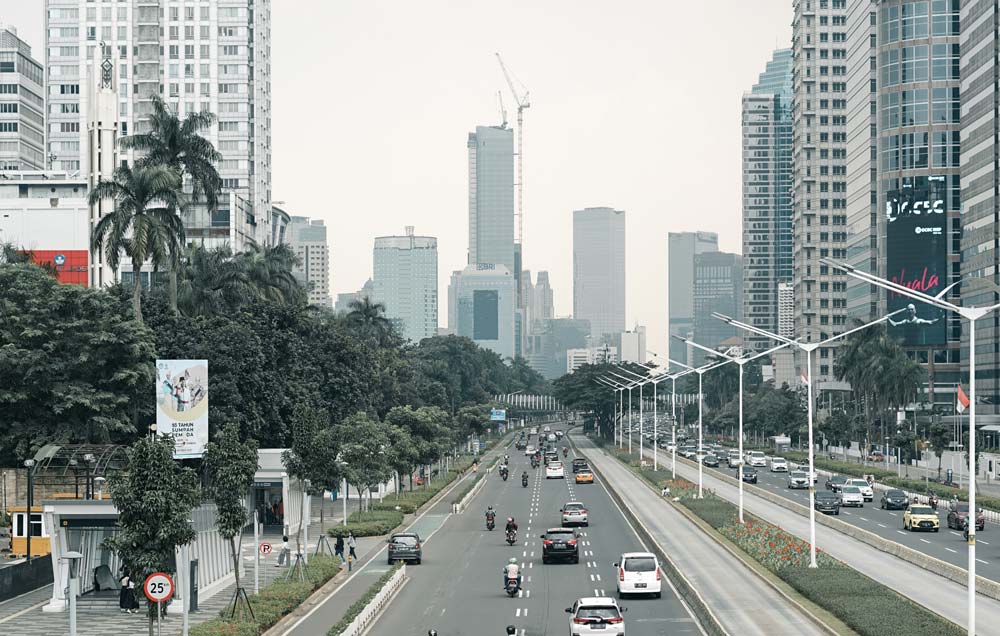
How should cities “develop”? And what can we do to ensure it is done correctly? Those are probably the questions that many people inside – and outside – the city government are asking. What do we have to do to ensure a good future for the citizens of the city of Jakarta, especially when it has its “capital” status removed in the not-too-distant future.
There are thousands of answers, and most of them are conflicting with each other! High rise vs low rise. MRT vs bus vs train, commercial offices vs working from home. Each has its pros and cons. Each has its champions. But ultimately to have ONE agreed Master Plan that everyone can follow is certainly what is needed. But what should that concentrate on? The models are endless, and the adherence to one which makes sense up to now hard to see.
Nonetheless, there are certainly a few core issues that cannot be compromised in my opinion. So, as we celebrate Jakarta’s birthday, I blow out these candles with a few ‘wishes’ for the city, in hopes to see it prosper and improve in ways that will benefits its citizens for years to come.

One: Air
The air we breathe must be as clean and unpolluted as possible. That’s a tall order in Jakarta, where the record is dismal, but the causes of the visible (and invisible) pollution are now clear so legislation is needed to make sure the targets are reached – including – sorry everyone – a reduction in motor vehicle traffic of 75% and an end to coal-fired power stations! Target date: 2028 – 5 years.
Two: Water
There has to be water available, and it should be directly drinkable from the taps, as promised by the state water companies who are called Perusahaan Air Minum (The Drinking Water Company!) This should be delivered through public networks for the entire population. Again this is not a one-year project but must be done within 5 years. Most European and American cities have achieved this, almost 100 years ago.
Three: Waste
We need the city to have minimum waste-to-landfill, so we need a fully integrated garbage separation, collection, recycling, reusing, and repurposing, ecosystem which applies to all buildings in Jakarta whether offices, malls, hotels factories or residential. No excuses. Target 3 years.

Four: Transportation
We need public transportation improved exponentially to ensure point one can be achieved! That will mean a massive investment in the MRT completion, thousands of new buses, perhaps the introduction of a tram service where road space permits (maybe replacing the bus lanes?) and the elimination of motorcycles. Target 10 years.
Once we have at least planned all that — and it is a tall order — we can focus on the things that make a city truly liveable: safety and stability, access to quality healthcare, a thriving cultural scene, good education, a clean environment and people-friendly infrastructure including excellent public spaces and parks.
The top ten most liveable cities in the world according to a very reliable Economist Intelligence Unit Report in 2022 were: Vienna, Copenhagen, Zurich, Calgary, Vancouver, Geneva, Frankfurt, Toronto, Amsterdam, Melbourne and Osaka. New Zealand and Australian cities are often mentioned too as are other Japanese and Scandinavian cities. Surely, we can copy some of their successful factors? All of their governments have offered assistance over the years. Are we too proud to take it? We don’t need to reinvent the wheel, copy shamelessly and adapt.
Of course, the quality of living standards overall is also governed by many factors: life expectancy, net income, human rights standards, corruption, government transparency and efficiency, terrorism and safety from gun and knife-related deaths. Of which only the last are we good at. Jakarta if it is anything, is a safe city. There are many factors which influence how ‘liveable’ a city is, but one thing is for sure Jakarta’s overpopulation, stressing all public resources makes it hard to qualify. But how to stop its growth? Introduce limits on children per family again? (Dua Cukup in the Suharto era).

The latest push: to make cities ‘walkable’ is wonderful, but so hard to achieve in this car-designed megalopolis. Just by making 15m wide pavements down Jl. Thamrin and Jl. Sudirman does not make Jakarta walkable. That will take many other factors, involving the regreening, rezoning and probably a complete rethinking of the whole concept of the city.
But don’t forget, the future of Jakarta is dependent especially on one thing: safeguarding it from sinking and flooding as the deadline for the coincidence of flooding and sea surges is closing and if we are not careful, the city – all the way to Monas will be underwater, and that could mean there will be no future for the whole north and central districts. So that has to be a priority if the city is to have a future at all.
Finally- the loss of Capital City status and the exit of all the civil servants to Nusantara? Let them go. Bid them farewell and good luck and get on with life. Leave politics behind and behave like Bandung, Surabaya, Medan or Manado. Become a city that loves itself and its people. Rebrand and regain your own identity. Remember Enjoy Jakarta? The old brand from 15 years ago. It’s time to do just that.







